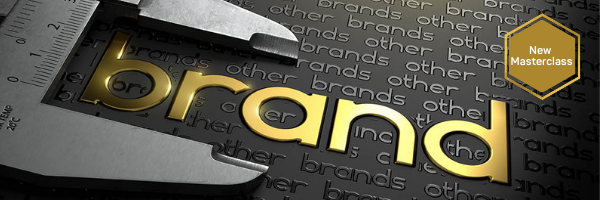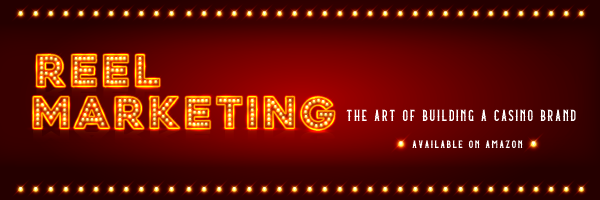Branding – what was once thought of as merely having a great logo – has evolved. Indeed, the last two years have likely spotlighted brands as more than a logo. Whether good or bad, brands have certainly grown into their voices.
Like the old Police song, “every step you take,” we are watching brands. Everything done under the brand banner, from community and engagement to charity and experience, is considered “the Brand.” Culture and employees impact the brand in the eyes of your audience. Therefore, it is more important than ever that everyone be on the same page about how you want your company to be perceived.
And in a commoditized industry like gaming, working from one playbook is critical.
Customers put every brand in a mental/emotional box. It creates a shortcut to the reason they would choose you. We want our brands to be what the researchers call “top of mind” and in the correct box.
Target audiences evolve and change, not only because it is the nature of humans but also because environmental and market factors can cause changes. It is always enlightening and valuable to periodically review your brand tone, manner, and purpose and ensure it is still relevant to your target audience.
Branding Exercises
Branding exercises may seem like a new phrase, but they are certainly not unique in concept. They explain the company’s purpose and vision and the connection to its customers. The outcome is to provide marketers with a focus that keeps us top of mind and top of the heart.
Changes in leadership, staffing, and training can often cause companies to become fuzzy in their brand vision. Additionally, the rush to get things done can have us shortcut the processes that enhance the brand, further tarnishing the image. As such, branding exercises or workshops may be something you want to do periodically.
More importantly, undertaking a branding exercise can aid you in achieving a shared understanding of your brand vision, the target audience, and how the two fit together. The process will enhance your marketing and messages, helping you communicate consistently internally and externally. Best of all, these exercises can be fun!
Branding exercises can be done with specific departments if you notice satisfaction scores dropping or when the department wants to refocus its efforts.
Exercises can be done with team members (individually) to support increased brand familiarity. While they should be a part of new team member onboarding, periodic training sessions throughout the year can prove valuable.
Branding Fun for Everyone
A branding exercise can range from silly to serious in an effort to instill valuable lessons. Here are a few of my favorites. They can be used as-is or as a jumping-off point. Above everything, don’t be shy about your brand and be creative!
On occasion, I like starting the day by asking each person to tell me what adjectives or phrases describe the brand. I document them all, so everyone has a copy. This step is a great starting point because it can provide a baseline for understanding the various assumptions and expectations for the brand. An elevator pitch from each participant is also great to have.
How to understand your brand
Brand Qualifiers
Gini Dietrich showed me this one when she helped me figure out the marketing of the Casino Marketing Boot Camp program. It was a valuable exercise and showed me how to narrow my focus. We’ve since shared this very same exercise in the brand exercises we work with clients.
We ask them to answer the following questions. Then we compare them to evaluate programs, partnerships, and even vendors.
-
We always XXX
-
We never XXX
-
We believe XXX
-
We support XXX
We then ask them for stories of their brand qualifiers in action and to share examples of how these qualities helped guide the decision-making in both a challenging customer situation and employee situation.
This exercise helps to uncover values mismatches that could someday blow up into a crisis.
Interrogate your brand
People buy from brands they know, like, and trust. This idea may seem like new-age woo-hoo to some, but it will uncover your customers’ buying behaviors. Ask yourself the following questions about your favorite brand. You’ll find it easy. It will feel a little more challenging to ask yourself the questions for your brand but trust me; it will start to illuminate your brand’s purpose and reality.
-
-
Who are you?
-
What are you committed to?
-
What can people count on you?
-
How are the mission and vision reflected in how we do business?
-
What traits should our employees, communications (both internal and external, including the investment and regulatory communities), and activities embody?
-
Brand Laddering
Multiple brand qualities can influence consumers to connect with and choose your brand over others. A brand ladder is a marketing tool used by marketers to communicate all the benefits of a brand to the end customer. The brand ladder concept guides you to understand why customers will choose you and can assist you in moving beyond marketing by attributes and moving to a higher level connection with your target customer.
You can take several approaches to create a ladder for your brand. We take a basic route that I have followed since my mentor Amanda Totaro first taught me the basics of branding.
-
Attributes – Physical features that we “own.”
-
Functional benefits – What do these attributes mean to the customer?
-
Emotional benefits – Why do customers care?
Some teams respond to one approach over the others when it comes to the final rung. We uncover this during the discussions and then proceed in one of the following ways.
-
Social benefits – Whether the brand increases the stature of the customer in the eyes of his social circle.
-
The job that needs to be done – Why ultimately does the customer choose us?
-
“Sweet spot” – Why is it essential to the customer?
This or That
Years ago, when we were attempting to reposition our casino portfolio. We needed to give our executive leadership a way to understand the value of the new positioning while giving them an anchor they could easily relate to. For this exercise, we took the notion of easily accessible brands. Were we Target or Walmart? Were we American Airlines or Southwest.
This process allowed everyone to see how we could focus on value (and want to own it) without seeming bargain-basement.
If you choose to go this route, have each person pick a brand in a different category they feel most represents your brand. Then have them pick a brand in the same type that represents a competitor. Have each person defend their choices. To work, these brands have to overlap you and the competition in terms of target customers, perceived value, and voice.
Front Page News
Consider this. Ten years from today, your brand will be on the front page of every influential publication and news outlet. What does the headline say? This exercise can aid you in aligning your brand vision and mission.
How have you changed the lives of your customers, team members, and partners?
Alternatively, we sometimes call this exercise “serial killer.” If your casino was purchased by someone else or ceased to exist, what would be missing from the lives of your constituents that cannot be replicated by new ownership or replaced by a competitor? When people gather to reminisce about your brand, what would they say are the best and worst moments. How can they help guide the brand today?
Superhero – what do people count on you for?
Thinking of your brand as a superhero can help you understand the greater purpose of what you offer customers. If your brand was a superhero,
-
Who are the bad guys?
-
What detractors are you trying to rid the world of? Confusing programs? Long lines?
Cocktail Party
Your brand as a friend at a cocktail party is a great way to consider your brand personality. Imagine your brand as a person who just showed up at a party full of your ideal customers AND competitors. Are you a friendly neighbor, annoying know-it-all, fun drinking buddy? What are your traits? What’s your story? How would you introduce them to your circle?
Write as much detail as you can.
Then in a new column, I want you to imagine your brand/friend has been very friendly with the bartender and might be a little overserved. How does your brand approach your circle now? How does your brand act differently?
This exercise can help you explore your brand personality and how you might amplify the good and curb the bad.
The Job We Do
One of the most productive conversations we’ve had at Casino Marketing Boot Camp has been around the Jobs Theory. What job are customers “hiring us for”?
Chose one buyer persona and consider what they are thinking. Draw a thought bubble, and add that detail. Then build their environment by adding your competitors and how they might pitch their solution. Now consider how you pitch your solution.
This simple exercise of understanding your customers’ problems and the solutions they can choose can aid you in the development of new ideas and messages you may not have considered before.
The Heros Who Inspire Us
Pick a brand that has inspired you (completely different from what you do). Then choose a brand that has overcome a challenge you are also facing. For both of these, make a list of all elements that make those brands unique (for instance, Apple’s Genius Bar was a revolutionary way of handling tech support). Now pretend one of those brands has bought your business.
What changes would they make to transform your brand? Pick one idea and map out how this would occur in your business. Then take steps to implement your ideas.
Ideas that Stick
For a fun exercise, give everyone a pad of sticky notes. Then have each person write down an adjective they feel describes your brand. Keep doing this until you have two dozen or so qualities. These should be the qualities that make you different from your competition.
Then start fine-tuning. One by one, discuss each quality. If most people agree a term does not apply, remove it. If there is disagreement, have people discuss their positions. Try to trim the list to about half.
After that, group the related terms — for instance, “fun” and “entertaining.” Try to give each group a word that embodies it. You now have a handful of terms that truly define your brand, making each brand decision easier to navigate.
Next Steps
Divide a piece of paper into three columns Today (left) and Tomorrow(right). Under Today capture what you learned about your brand during one or more of these exercises. Under Tomorrow, list all of the things you hope your brand will become.
The middle column is where you will have the opportunity to build a stronger brand. This center column should contain the changes needed to take you from today to tomorrow.
Summary

Article Name
How to Create Outstanding Casino Brands By Using These Easy Tools
Description
The last few years have likely spotlighted brands as more than a great logo. Whether good or bad, brands have certainly grown into their voices. Here are some easy tools you can use to workshop your current situation and your vision for the future.
Author
Julia Carcamo
Publisher Name
J Carcamo & Associates
Publisher Logo





Recent Comments